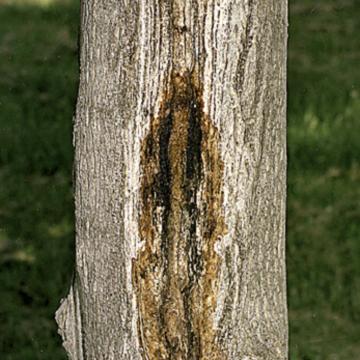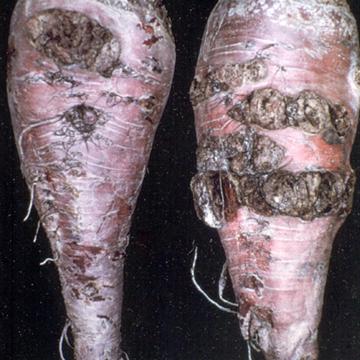DISEASE: Slime flux
HOST: Casuarina
Slime flux occurs on a number of tree species and is always associated with bacteria and yeast. However, the causal agent has not been identified.
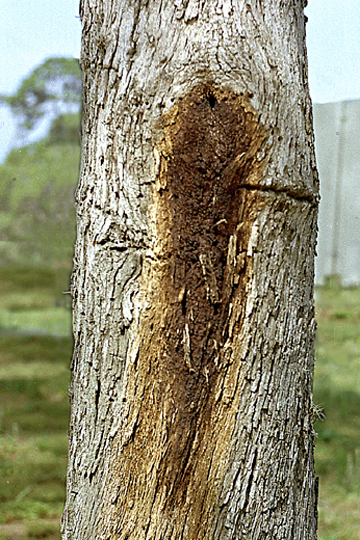
Slime flux | Casuarina
DISEASE: Slime flux
HOST: Casuarina (Casuarina equisetifolia)
PATHOGEN: Causal agent unknown
SOURCE: W. Sinclair
DISEASE: Slime flux
HOST: Elm
Although bacteria are associated with slime fluxes of many trees, the causal agents have not been identified.
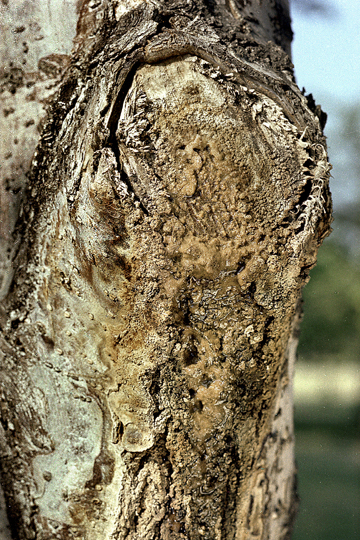
Slime flux | Elm
DISEASE: Slime flux
HOST: Elm (Ulmus pumila)
PATHOGEN: Causal agent unknown
SOURCE: W. Sinclair
DISEASE: Slime flux
HOST: Maple
The causal agent of slime flux has not been identified.
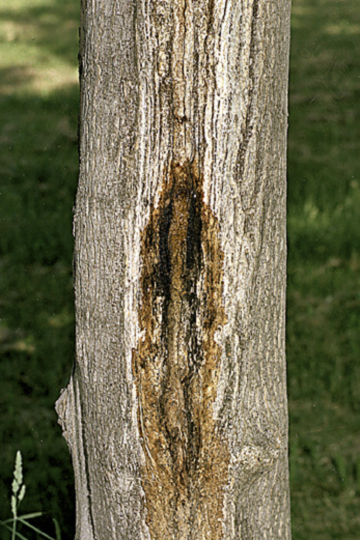
Slime flux | Maple
DISEASE: Slime flux
HOST: Maple (Acer saccharum)
PATHOGEN: Causal agent unknown
SOURCE: W. Sinclair
DISEASE: Slime flux
HOST: Willow
Foam at site of infection. Slime fluxes are common but the causal agent has not been identified.
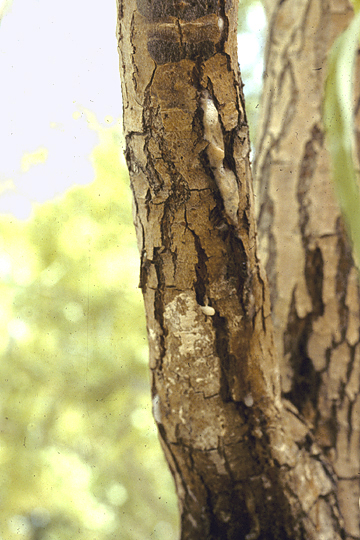
Slime flux | Willow
DISEASE: Slime flux
HOST: Willow (Salix sp.)
PATHOGEN: Causal agent unknown
SOURCE: S. Thomson
DISEASE: Sugar beet scab
HOST: Beet
Sugar beets with brownish, erumpent scabs.
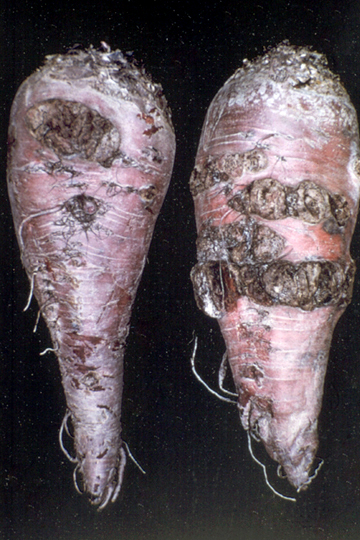
Sugar beet scab | Beet
DISEASE: Sugar beet scab
HOST: Beet (Beta vulgaris)
PATHOGEN: Streptomyces scabiei
PATHOGEN SYNONYM: Streptomyces scabies
SOURCE: M. Shurtleff
DISEASE: Varnish spot
HOST: Lettuce
Leaf with large brown and small, shiny, dark brown necrotic spots that spread in size and later dry out.
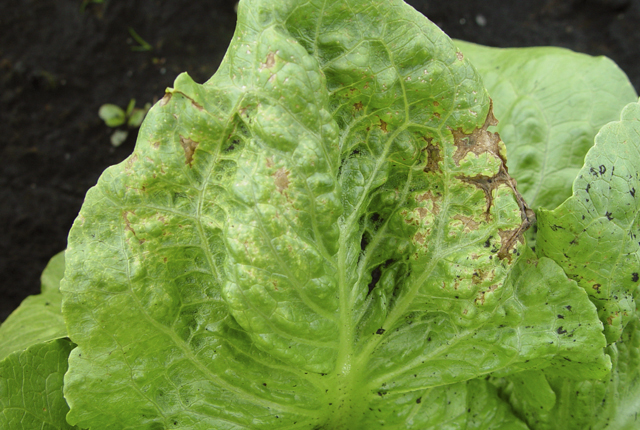
Varnish spot | Lettuce
DISEASE: Varnish spot
HOST: Lettuce (Lactuca sativa)
PATHOGEN: Pseudomonas cichorii
SOURCE: S. Miller
DISEASE: Varnish spot
HOST: Lettuce
Advanced stage of disease with large, brown necrotic areas. They most often are along veins. Outermost leaves of the head usually are not affected.

Varnish spot | Lettuce
DISEASE: Varnish spot
HOST: Lettuce (Lactuca sativa)
PATHOGEN: Pseudomonas cichorii
SOURCE: K. Ohata, M. Goto




